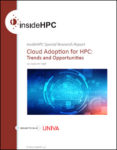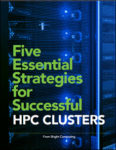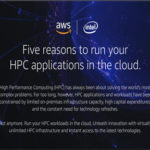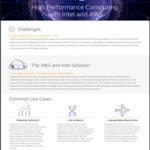This whitepaper is an insideHPC Special Research Report sponsored by Univa® Corporation: Cloud Adoption for HPC:
Trends and Opportunities. Recently, InsideHPC ran a survey, sponsored by Univa, to identify the trends and opportunities for adoption of HPC workflows in the cloud. There were 143 respondents: 39% academic/non-profit, 17% manufacturing or engineering, 11% government research; 59% North America, 24% Europe, 8% Asia; 59% with less than 20,000 employees. This whitepaper is a summary of what was learned from this survey.
Cloud Adoption for HPC: Trends and Opportunities
Five Essential Strategies for Successful HPC Clusters
Successful HPC clusters are powerful assets for an organization. However, these systems are complex and must be built and managed properly to realize their potential. If not done properly, your ability to meet implementation deadlines, quickly identify and resolve problems, perform updates and maintenance, accommodate new application requirements and adopt strategic new technologies will be jeopardized. Download the new white paper from Bright Computing that explores key strategies for HPC clusters.
What a TCO Analysis Won’t Tell You: Dig deeper to discover the true cost of your on-premises HPC investments
Most organizations will find that cloud-based HPC solutions will deliver better ROI, even when a basic Total Cost of Ownership (TCO) analysis suggests continued on-premises investments. Furthermore, lower cost has not always been the primary accelerant for innovation when it comes to cloud adoption. Download the new white paper from AWS that examines the hidden factors that should influence decisions about HPC investments.
Innovation on Demand
Get your results to market faster, simplify operations, and save money with flexible, configurable AWS HPC solutions that are proven to drive results for companies large and small in nearly every industry. Download the eBook to learn more.
Innovation Without Limits — Your Guide to High Performance Computing in the Cloud
With flexible, unhindered access to Intel® Xeon®-powered compute instances and an array of Intel®-optimized software libraries available through the AWS Marketplace, your engineers and researchers can rapidly produce high-value answers to complex questions. Download the new eBook from Intel, and discover how enterprises and research institutions are maximizing productivity and saving on costs by moving their HPC workloads to AWS.
Five Reasons to Run Your HPC Applications in The Cloud
In this new infographic from Intel, you’ll see examples of successful, real-world HPC deployments on virtually unlimited, Intel® Xeon® technology-powered AWS compute instances that provide scalability and agility not attainable on-premises. Download the new report to discover how to innovate without limits, reduce costs, and get your results to market faster by moving your HPC workloads to AWS.
High Performance Computing with Intel and AWS
AWS and Intel allow your engineers and scientists to innovate and accelerate results on virtually unlimited HPC infrastructure. Download the new solution brief from Intel that offers an overview of the AWS-Intel HPC solution and how it can help your teams collaborate securely.
The Future of HPC in the Cloud
The objectives of this document are:
* To determine the key determinants of cloud computing adoption decisions for HPC
* Determine the present and future critical issues and problems facing HPC and the adoption of HPC in the Cloud from a stakeholder perspective.
Impact of Meltdown and Spectre Vulnerabilities on HPC
“Performance is important in high performance computing. A performance impact on HPC use can be more than a simple annoyance. Because of the high investment cost and energy usage of HPC systems, a performance impact can have a signi cant effect on price per compute job. As we have discussed in the previous sections, the “page table isolation” workarounds have an overhead on entering and leaving the kernel. Luck happens that in HPC, computers spend most of their time in user space, doing computations. Low-latency networks such as In niband allow HPC systems to perform network communication without involving the kernel. Therefore during HPC computations, the Linux kernel might not be actively involved and the CPUs are running at full power.”
Nine Critical Features for Object Stores
Object stores represent a simpler, more scalable solution and one that is easily accessed over standard web-based protocols. To learn more about Object Stores download this guide.












